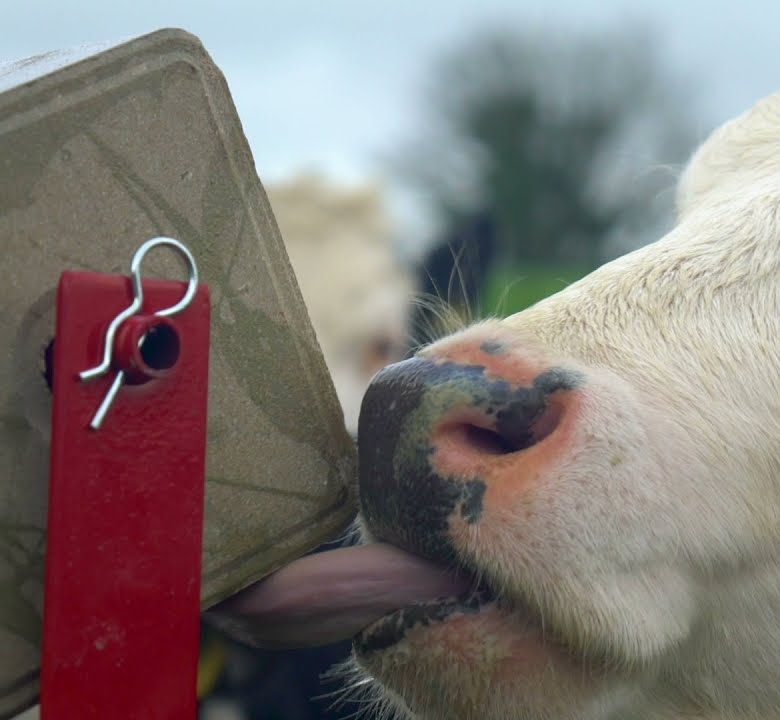Soil structure and its impact on your herd’s fertility

Grassland Agro’s product and marketing managers, Sean McMahon and David Corbett, focus on the physical pillars of soil, more commonly known as soil structure.
Soil structure, or the physical pillars of soil, is a key component of soil health which is often overlooked.
However, rising economic and environmental challenges associated with chemical fertilisers require farmers to optimise soil structure on farm and alleviate soil compaction.
Grass VESS method
As part of the Grassland Agro Soil Sustainability Programme, last year, thousands of grass-based farms in Ireland were assessed for soil compaction using the Grass VESS method.
The results of this survey show that a structural quality (SQ) score of 2.8 was found on grass-based farms across Ireland.
To find out more about soil sampling; fertiliser planning; silage measuring; soil biology assessment; and soil structure assessment, click here to listen to episode two of Grassland Agro’s podcast, ‘The Sod Pod’.
SQ is ranked on a scale of one to four; a SQ score of one portrays perfect soil structure and a SQ score of four portrays heavily compacted soil.
The average SQ score of 2.8 shows that soil compaction is an issue on many grass-based farms in Ireland.
Soil structure
In order to help farmers understand soil structure, Grassland Agro’s team of highly skilled agronomists can perform a Grass VESS test on your farm for free.
In the video above, David and Sean assess two different sods of soil – one with excellent structure and one with a heavily compacted structure.
Soil structure has a significant influence on nutrient cycling, nutrient availability and root development.
Soil structure can be described by using the ‘two pint glasses‘ analogy.
Put simply, while a pint glass of water and a pint glass of ice-cubes have an identical chemical make-up, they’re physically different. As a result, it is more difficult to drink the water from the glass full of ice-cubes.
“The ice-cubes act as large aggregates in the soil that can’t be penetrated,” said David.
In the context of soil structure, if there are two soil samples with phosphorus (P) index levels of four, but sample A has excellent soil structure and sample B has a compacted soil structure, sample B’s soil’s physical state would limit its nutrient availability.
Soil compaction not only impacts farmers through reduced crop output, but it also affects animal performance.
“The roots can’t penetrate through that compacted aggregate to access the phosphorus because at 7.1°, only 15-20% of the phosphorus in the soil is available to the plant because the soil is cold
“This [looser] soil will get a lot warmer, a lot quicker than this compact soil,” explained David.
Herd fertility
Recently, Pica, which is caused by a phosphorus deficiency, is being reported more frequently in dairy cattle.
To avoid incidences of Pica, farmers are advised to supplement their herd with mineral supplement blocks, such as Grassland Agro’s Calsea Phos mineral block.
Grassland Agro’s Calsea Phos mineral block is a high-performance mineral block with a digestive aid. It contains a combination of calcium, high levels of phosphorus, trace elements and vitamins to balance animal nutrition.
Pica occurs more commonly within herds that are grazing pastures with high soil phosphorus levels, or where chemical phosphorus fertilisers have been applied.

More commonly, soil compaction is the underlying issue present as the plant can’t absorb sufficient phosphorus from the soil.
Pica can have a huge impact on herd fertility which is at the forefront of farmers’ minds ahead of this year’s breeding season.
To find out more about grassland management and breeding preparation, click here to listen to episode four of Grassland Agro’s podcast, ‘The Sod Pod’.
Soil conditioner
It is critically important to investigate soil structure before performing any remedial work.
The best remedy for soil structure is soil biology and using ‘natures plough’ to develop a natural aeration of the soil.
Soil biology and soil structure can be improved through the application of a soil conditioner such as Physiolith.
“The soil can’t supply enough phosphorus to meet the nutrient requirements of the cow, so it is absolutely crucial that we get at least one, if not two splits of phosphorus in some shape or form into the ground to drive on availability in the plant,” said David.
The application of a soil conditioner results in the release of greater levels of nitrogen (N), phosphorus and sulphur from the soil’s reserves.
On-farm trials have shown that an additional release of 60kg/N/ha was released from the soil in a single season following the application of Physiolith.

Physiolith will increase the efficiency of chemical and organic fertilisers applied throughout the year, which will reduce chemical nitrogen requirements as a result.
Physiolith is an ideal partner for organic manures such as slurry. It can accelerate the release of the organic portion of slurry nitrogen which can be used to offset chemical nitrogen.
Therefore, the soil’s supply of nitrogen is maximised through mineralisation due to increased biological activity which will offset chemical nitrogen and maintain growth as legislation and fertiliser reductions loom.
These soil properties are fundamental factors in tackling the environmental, economical and social sustainability issues facing Irish agriculture.
The Grassland Agro app for its technical agronomy team is available to download for free through the Google Play Store by clicking here.
